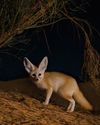Bringing Back The Tiger
BBC Wildlife
|May 2021
Just over a decade ago, leaders of all 13 tiger range countries came together in a bold and inspiring pledge to save this iconic big cat. Their pledge? To double tiger populations by 2022, the next Chinese Year of the Tiger. So, with seven months to go, who is on track to deliver?

The sun was getting low over Bardia National Park, Nepal. As wildlife photographer Emmanuel Rondeau and his guide made their way back to camp, they spotted a group of chital deer not far from the park’s border. Huddling tightly and casting furtive glances towards the undergrowth, the deer’s behaviour suggested they were not alone. But it was impossible to identify any potential threat in the metre-high grass.
The guide pulled up next to a tree and began to climb. Emmanuel followed. Suddenly, the guide stopped in his tracks, and uttered the one word Emmanuel had hoped to hear since he’d started his quest five years previously: “Tiger!”

It took a moment for Emmanuel to spot his quarry, perfectly camouflaged among grasses burnt yellow by the sun. It was his first wild encounter with a tiger after documenting the big cat, first in Russia, then Bhutan and now Nepal. As if that wasn’t enough, the guide then spotted a second tiger, lying quietly in a closer patch of vegetation. Emmanuel was incredibly lucky. After decades of uncontrolled persecution and relentless habitat destruction, wild tiger populations have declined by more than 95 per cent – from an estimated 100,000 to as few as 3,200 12 years ago.
With the species this far gone, it has become clear that saving tigers from extinction will only be achieved through global co-operation. And so, in 2010, leaders from 13 tiger range countries came together in St Petersburg for the first International Tiger Conservation Forum. There, they endorsed a Global Tiger Recovery Programme (GTRP) and made an unprecedented pledge: to double the number of tigers in the wild by 2022, the next Chinese Year of the Tiger.
Denne historien er fra May 2021-utgaven av BBC Wildlife.
Abonner på Magzter GOLD for å få tilgang til tusenvis av kuraterte premiumhistorier og over 9000 magasiner og aviser.
Allerede abonnent? Logg på
FLERE HISTORIER FRA BBC Wildlife

BBC Wildlife
"I was terrified the elephant would ram us"
African elephant in Kenya
2 mins
January 2026

BBC Wildlife
ALL YOU EVER NEEDED TO KNOW ABOUT THE Fennec fox
THE FENNEC FOX IS THE SMALLEST fox in the world, with a body length that can be as little as 24cm.
3 mins
January 2026

BBC Wildlife
INTO THE PLASTISPHERE
A unique synthetic ecosystem is evolving in our oceans – welcome to the plastisphere
7 mins
January 2026

BBC Wildlife
“More than half of all animal life exists in a parasitic relationship, and all life lives in symbiosis”
Our survival depends on species evolving to live together - but some relationships take dark turns
7 mins
January 2026

BBC Wildlife
Are animals able to dream?
SLEEP IS A MYSTERIOUS THING. FOR A long time, we weren't sure why we do it.
1 mins
January 2026

BBC Wildlife
Does a cuckoo know it's a cuckoo?
ABSURD LITTLE BIRDS ACROSS THE world lay their eggs in the nests of other species, leaving the hapless parents to raise a changeling at the expense of their own offspring.
2 mins
January 2026

BBC Wildlife
Orcas killing young sharks
Juvenile great whites are easy prey for orca pod
1 mins
January 2026

BBC Wildlife
Ocean goes on tour
Acclaimed film touring the UK, backed by live orchestra and choir
1 min
January 2026

BBC Wildlife
Feisty bats hunt like lions
Winged mammals use a 'hang and wait' strategy to take down large prey
1 mins
January 2026

BBC Wildlife
SNAP-CHAT
Richard Birchett on magical merlins, wily coyotes and charging deer
2 mins
January 2026
Translate
Change font size

